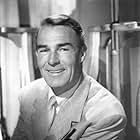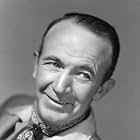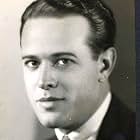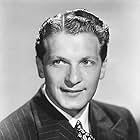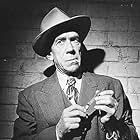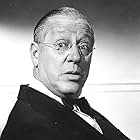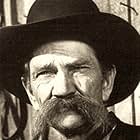Aggiungi una trama nella tua linguaAfter the Civil War, an ex-Confederate soldier faces new battles, including the elements and a carpetbagger intent on destroying him.After the Civil War, an ex-Confederate soldier faces new battles, including the elements and a carpetbagger intent on destroying him.After the Civil War, an ex-Confederate soldier faces new battles, including the elements and a carpetbagger intent on destroying him.
William Roberts
- Singin' Cy
- (as Bill Roberts)
Ernie Adams
- Confederate Soldier
- (non citato nei titoli originali)
Irving Bacon
- Pvt. Collins
- (non citato nei titoli originali)
Ed Brady
- Union Soldier
- (non citato nei titoli originali)
Everett Brown
- Man with Watches
- (non citato nei titoli originali)
Buck Bucko
- Soldier
- (non citato nei titoli originali)
James P. Burtis
- Swenson
- (non citato nei titoli originali)
Spencer Charters
- Chairman
- (non citato nei titoli originali)
Trama
Lo sapevi?
- QuizOn March 23, 1938, Randolph Scott was carrying Joan Bennett during the filming of a mob scene, when an actor playing a soldier lost his balance and struck Bennett in the face with his bayonet, causing a cut that required her to go to the hospital. An item about it was carried in newspapers throughout the country, often close to another item about her sister Constance Bennett's libel suit against gossip columnist Jimmy Fidler.
Recensione in evidenza
This was a big budget effort for Paramount in 1938. Westerns after years of being relegated to the B picture market were just starting to come back with major player casts. This concerns the a fictional adaption of the first cattle drive from Texas to Abilene, Kansas following the Chisholm Trail. Howard Hawks did the same story a decade later with Red River only he did it far better.
Hawks in Red River contents himself with a line or two explaining the economic situation in Texas, post Civil War. Here a good quarter of the film is taken up with it. And the kind of racism expressed wouldn't fly today at all.
In the first 10 minutes of the film we see a black Union Army soldier sauntering down the street saying, "Union Army coming." with a crowd of defeated Confederates scowling. Never mind that that man had just fought for his freedom. Right after that the veterans see some of their brethren working the docks of the port of Indianola and one remarks that that wasn't the kind of job a white man should be doing. I'm sure that longshoremen everywhere got a charge out of that.
Anyway our two leads are Joan Bennett, an unreconstructed rebel who is the granddaughter of May Robson who owns a lot of cattle and land, but has no liquid assets to pay the Yankee carpetbagger taxes. She's involved in gunrunning to a group of rebels at large of whom her sweetheart Bob Cummings is one. He and his cavalry troop are going to join Maximilian in Mexico and when Max is finished putting down his rebels, they're coming back to throw out the Yankees. The other lead is Randolph Scott who is a Confederate veteran, but who realizes the war is over and we have to make a living.
His idea is to drive May Robson's cattle and sell them in Abilene where the railroad has reached. They have to sneak them out from under the nose of Robert Barrat, the local carpetbagger administrator who wants to seize them and the land for taxes imposed by the carpetbagger occupational government. That by the way sets the scene for the film's most memorable moment as May Robson drinks Robert Barrat under the table and Scott, Bennett and the rest of the hands sneak off with the herd.
After that it's the usual situations one expects from westerns involving cattle drives. They pick up Bob Cummings along the way whose troops have been annihilated by the Juaristas. Bob Cummings also tells Bennett of a new movement he's getting involved in called the Ku Klux Klan. By the end of the film with all the trials and tribulations they've gone through, guess who Bennett winds up with?
Later on this would be routine stuff for Randolph Scott. He and Bennett work well together. They get good support from Walter Brennan, Raymond Hatton, Harvey Stephens, Francis Ford, and most of all May Robson and Robert Barrat. A previous reviewer said Barrat is a buffoon and to be sure he is. Barrat is the kind of idiot that could only rise to the top in a situation like carpetbagger Texas. He probably is somebody's idiot brother-in-law and got the job through influence. That doesn't make him any less sinister. Power corrupts and absolute power corrupts absolutely.
This film is also an example of how the studios and the recording industry work hand in glove. A song called Silver on the Sage was written by Leo Robin and Ralph Rainger for the film. It's sung around the campfire in the usual singing cowboy tradition that was so popular back then. It's sung by Eddie Dean who later became a movie cowboy star in his own right. But Paramount just happened to have THE number one recording artist of the century under contract at the time. They persuaded Bing Crosby to record it for Decca and it enjoyed a modest sale, not one of Bing's bigger hits. But Robin and Rainger did much better that year with a song they wrote for another Paramount star for The Big Broadcast of 1938. That would be Thanks for the Memory and the film's star Bob Hope. It won the Oscar for best song that year.
Nice film, good performances, but see Red River first.
Hawks in Red River contents himself with a line or two explaining the economic situation in Texas, post Civil War. Here a good quarter of the film is taken up with it. And the kind of racism expressed wouldn't fly today at all.
In the first 10 minutes of the film we see a black Union Army soldier sauntering down the street saying, "Union Army coming." with a crowd of defeated Confederates scowling. Never mind that that man had just fought for his freedom. Right after that the veterans see some of their brethren working the docks of the port of Indianola and one remarks that that wasn't the kind of job a white man should be doing. I'm sure that longshoremen everywhere got a charge out of that.
Anyway our two leads are Joan Bennett, an unreconstructed rebel who is the granddaughter of May Robson who owns a lot of cattle and land, but has no liquid assets to pay the Yankee carpetbagger taxes. She's involved in gunrunning to a group of rebels at large of whom her sweetheart Bob Cummings is one. He and his cavalry troop are going to join Maximilian in Mexico and when Max is finished putting down his rebels, they're coming back to throw out the Yankees. The other lead is Randolph Scott who is a Confederate veteran, but who realizes the war is over and we have to make a living.
His idea is to drive May Robson's cattle and sell them in Abilene where the railroad has reached. They have to sneak them out from under the nose of Robert Barrat, the local carpetbagger administrator who wants to seize them and the land for taxes imposed by the carpetbagger occupational government. That by the way sets the scene for the film's most memorable moment as May Robson drinks Robert Barrat under the table and Scott, Bennett and the rest of the hands sneak off with the herd.
After that it's the usual situations one expects from westerns involving cattle drives. They pick up Bob Cummings along the way whose troops have been annihilated by the Juaristas. Bob Cummings also tells Bennett of a new movement he's getting involved in called the Ku Klux Klan. By the end of the film with all the trials and tribulations they've gone through, guess who Bennett winds up with?
Later on this would be routine stuff for Randolph Scott. He and Bennett work well together. They get good support from Walter Brennan, Raymond Hatton, Harvey Stephens, Francis Ford, and most of all May Robson and Robert Barrat. A previous reviewer said Barrat is a buffoon and to be sure he is. Barrat is the kind of idiot that could only rise to the top in a situation like carpetbagger Texas. He probably is somebody's idiot brother-in-law and got the job through influence. That doesn't make him any less sinister. Power corrupts and absolute power corrupts absolutely.
This film is also an example of how the studios and the recording industry work hand in glove. A song called Silver on the Sage was written by Leo Robin and Ralph Rainger for the film. It's sung around the campfire in the usual singing cowboy tradition that was so popular back then. It's sung by Eddie Dean who later became a movie cowboy star in his own right. But Paramount just happened to have THE number one recording artist of the century under contract at the time. They persuaded Bing Crosby to record it for Decca and it enjoyed a modest sale, not one of Bing's bigger hits. But Robin and Rainger did much better that year with a song they wrote for another Paramount star for The Big Broadcast of 1938. That would be Thanks for the Memory and the film's star Bob Hope. It won the Oscar for best song that year.
Nice film, good performances, but see Red River first.
- bkoganbing
- 12 mag 2004
- Permalink
I più visti
Accedi per valutare e creare un elenco di titoli salvati per ottenere consigli personalizzati
Dettagli
- Tempo di esecuzione1 ora 32 minuti
- Colore
- Proporzioni
- 1.37 : 1
Contribuisci a questa pagina
Suggerisci una modifica o aggiungi i contenuti mancanti

Divario superiore
By what name was The Texans (1938) officially released in India in English?
Rispondi










